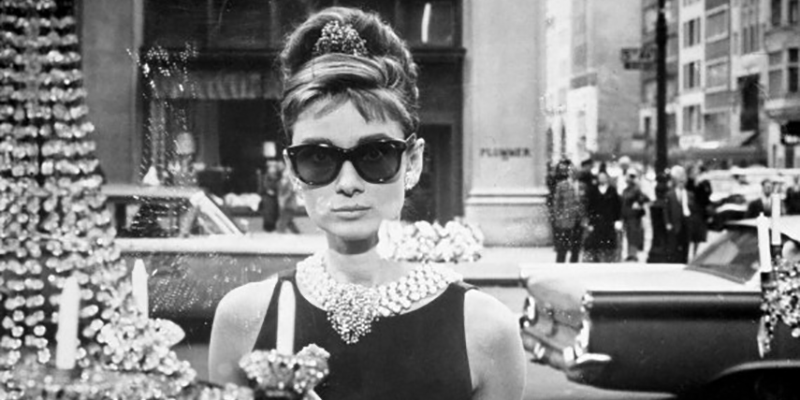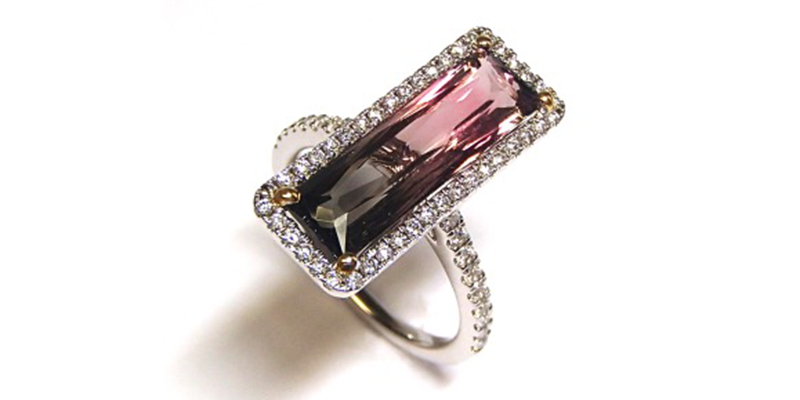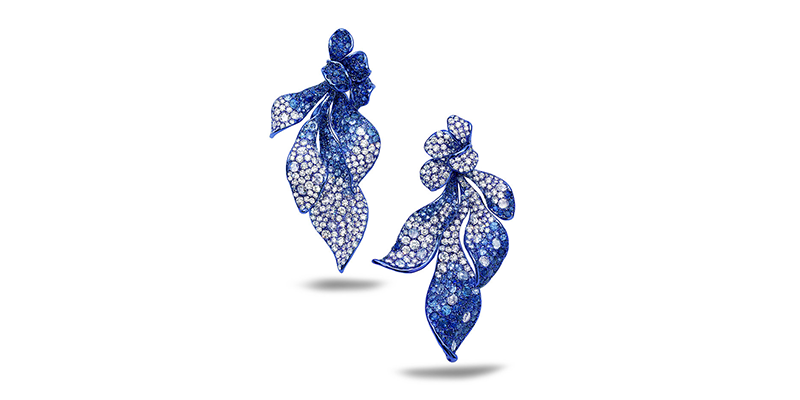 In this piece, it’s all about Tiffany & Co!
In this piece, it’s all about Tiffany & Co!
If we were to ask you to name a famous fine jewellery house, it’s more than likely that among the Cartiers and Van Cleef & Arpels that the name Tiffany & Co would pop up. With stores and concessions in almost every major city in the world, and a sales plan that seeks to encompass every income, it’s not only one of the world’s best known jewellery brands, but one of the world’s best known brands, full stop.
But when did it all start?
The beginnings
The roots of Tiffany & Co lie in a business founded in 1837 by Charles Lewis Tiffany and John B. Young, initially as a “stationery and fancy goods emporium”, selling mainly stationery items, named “Tiffany, Young and Ellis”. In 1853, the name was changed to Tiffany & Company, when Charles Tiffany took control and established the first steps into luxury items and jewellery.
One of Tiffany & Co’s most famous marketing tools, their mail-order catalogue – now known as the Blue Book – was first issued in 1845, the unmistakeable shade of blue chosen by Charles Tiffany himself. Their focus on luxury and quality was rewarded when, in 1867, Tiffany was the first U.S. firm to win an award for excellence in silverware at the Exposition Universelle in Paris. Their reputation for high end design was given added prestige in 1878, when Tiffany & Co. won the gold medal for jewellery and a grand prize for silverware at the Paris Exposition.
In 1887, Tiffany bought a selection of the French Crown Jewels, when they were put up for sale by the Third French Republic (we can’t help thinking that the jolly old French made a major boo boo here, but hey, c’est la vie!) This move resulted in much publicity and further solidified the Tiffany brand’s association with high-quality diamonds. This purchasing of fabulous European jewels and jewellery had been started in 1848, by Charles Tiffany, who went on a buying expedition to Europe, buying up heirlooms and family pieces from the increasingly impoverished European aristocracy.
The Tiffany engagement ring was designed in 1886, using a unique six-prong device that maximises the gemstone’s sparkle, allowing light to hit the stone on all sides. It’s still in production today and we can’t even begin to guess how many fingers sport this ring. Personally, we’d choose a bespoke design from Christopher Evans any day…!
 Made it to the movies
Made it to the movies
In 1961, Tiffany & Co made the silver screen, in the eternally fabulous film, Breakfast at Tiffany’s, starring the incomparable Audrey Hepburn. Hepburn played Holly Golightly, an eccentric good time girl in search of a rich, older man. She loves Tiffany, she says, because:
“It calms me down right away, the quietness and the proud look of it; nothing very bad could happen to you there, not with those kind men in their nice suits, and that lovely smell of silver and alligator wallets.”
It was in 1969 when the brand released their now iconic Return to Tiffany keyring, a design that has since inspired one of their bestselling collections globally. In 1974, new designer Elsa Peretti joined Tiffany, and later was responsible for another of Tiffany & Co’s most iconic pieces, the Tiffany heart.
 Fine jewellery
Fine jewellery
Tiffany & Co isn’t all silverware and mass production of course. They were responsible for introducing the peachy-pink gemstone morganite in 1910, named for financier JP Morgan by Tiffany’s chief gemmologist, Dr. George F Kunz. Kunz himself has the pink gemstone Kunzite named after him, of course, following its discovery in 1903. In 1968 Tiffany made the fabulous blue gemstone Tanzanite one of the world’s most sought-after gems, and in 1974 they introduced the green gemstone Tsavorite, which they named for the Tsavo National Park in Kenya, where it was discovered.
Over the decades their collections of high jewellery have revealed some of the most beautiful pieces ever designed, with breath-taking use of coloured gems, from sapphires and tanzanite to tourmaline, aquamarine and zoisite.
It’s clear that Tiffany means different things to different people, but whether you’re in the market for a one-of-a-kind piece of couture jewellery, or a Tiffany key-ring to call your own, the arrival of anything in a pale blue box, adorned with a white ribbon, is sure to set your heart beating harder.



 In this piece, it’s all about Tiffany & Co!
In this piece, it’s all about Tiffany & Co! Made it to the movies
Made it to the movies Fine jewellery
Fine jewellery
 Tourmalines are one of the most versatile of gemstones, coming in a wide variety of glorious colours.
Tourmalines are one of the most versatile of gemstones, coming in a wide variety of glorious colours.  What’s in a name?
What’s in a name? Watermelon tourmaline is pink in the centre and green around the outside. These dazzlingly different gemstones can be cut on the flat, like a slice through a watermelon, or faceted, with the colour running top to bottom. Both cuts always draw comment.
Watermelon tourmaline is pink in the centre and green around the outside. These dazzlingly different gemstones can be cut on the flat, like a slice through a watermelon, or faceted, with the colour running top to bottom. Both cuts always draw comment. Designer’s favourite
Designer’s favourite



 You’ve all heard it, or said it, when a friend presents her new diamond engagement ring: ‘how many carats is it?’ and then we breathlessly hang on the answer. But what does it mean? What is carat weight? And why is carat weight important?
You’ve all heard it, or said it, when a friend presents her new diamond engagement ring: ‘how many carats is it?’ and then we breathlessly hang on the answer. But what does it mean? What is carat weight? And why is carat weight important? Why is carat weight important?
Why is carat weight important? A very personal choice
A very personal choice When we think of Marie Antoinette we think of her dedication to hedonism, her doomed flight from Paris in the dead of night, her execution by Guillotine and, of course – “let them eat cake.”
When we think of Marie Antoinette we think of her dedication to hedonism, her doomed flight from Paris in the dead of night, her execution by Guillotine and, of course – “let them eat cake.” The royal jewels survive
The royal jewels survive The ten pieces left to the Bourbon-Parma family were sent to auction at
The ten pieces left to the Bourbon-Parma family were sent to auction at  Actually, it’s not entirely accurate to call topaz the birthstone for November, as there are in fact two birthstones for this chilly, damp month – topaz and citrine. In which case we ought perhaps to say topaz is a birthstone for November. Both are golden sunny stones of course, but both have different histories and different meanings.
Actually, it’s not entirely accurate to call topaz the birthstone for November, as there are in fact two birthstones for this chilly, damp month – topaz and citrine. In which case we ought perhaps to say topaz is a birthstone for November. Both are golden sunny stones of course, but both have different histories and different meanings. In fact, pure topaz is without any colour, but it can become stained by impurities to take on any colour of the rainbow. The colour that is most prized is known as Imperial topaz, which has a rich orange hue with pink or red undertones. It is thought that the name of this shade of topaz originated with the Russian royal family’s insistence on keeping the finest colours of stones mined in their own Ural Mountains exclusively for their own use. Blue topaz is also highly prized but is rare in its natural form, meaning that most blue topaz you will find has been heat treated to achieve the desired colour.
In fact, pure topaz is without any colour, but it can become stained by impurities to take on any colour of the rainbow. The colour that is most prized is known as Imperial topaz, which has a rich orange hue with pink or red undertones. It is thought that the name of this shade of topaz originated with the Russian royal family’s insistence on keeping the finest colours of stones mined in their own Ural Mountains exclusively for their own use. Blue topaz is also highly prized but is rare in its natural form, meaning that most blue topaz you will find has been heat treated to achieve the desired colour. Beyoncé has created for herself quite an extraordinary collection of fabulous jewellery, and when it comes to style, well, she likes it big.
Beyoncé has created for herself quite an extraordinary collection of fabulous jewellery, and when it comes to style, well, she likes it big. More is more
More is more Bought it myself
Bought it myself The award for the most popular engagement ring style for 2018 goes to….drum roll please…the ART DECO inspired ring!
The award for the most popular engagement ring style for 2018 goes to….drum roll please…the ART DECO inspired ring! Finally, searches for rings with coloured stones saw an impressive lift too, a trend we have seen ourselves indeed. Coloured gems of course needn’t mean fancy coloured diamonds, something we covered in our post about
Finally, searches for rings with coloured stones saw an impressive lift too, a trend we have seen ourselves indeed. Coloured gems of course needn’t mean fancy coloured diamonds, something we covered in our post about 

